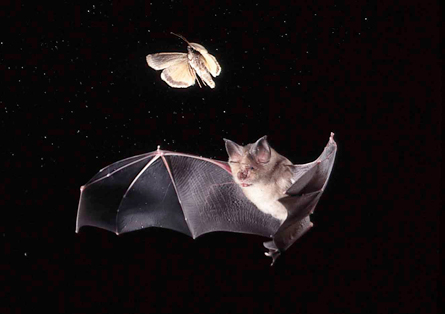Life
Bats are savvy shoppers for insect snacks, plus heartless dinos and worm evolution in this week’s news
Picky bats
Despite scientific theorizing to the contrary, bats can be sophisticated shoppers as they fly around emitting sounds and analyzing echoes to locate flying insect snacks. Horseshoe bats, known to be able to distinguish certain groups of insects just by wingbeat echoes, turn out to make smart decisions about whether a particular insect is worth chasing. Tested using little propellers that mimic plump or small moths offered at various intervals, the bats swiftly learned the system. They flew toward, or ignored, small propellers depending on whether the moth “market” would quickly offer a better choice, researchers in Germany report online March 2 in the Proceedings of the Royal Society B. —Susan Milius

To leash or not to leash
Requiring that hikers leash their dogs or leave them at home doesn’t seem to preserve numbers of bobcats and other wild carnivores in Northern California parks. Park managers have been concerned that dogs could disturb prey or otherwise bother large mammals, but in 21 recreation areas with different dog policies, the number of people using the park was more important for carnivore numbers than any dog rule was, researchers from the University of California, Berkeley report in an upcoming Conservation Biology. Instead of devoting effort to enforcing dog laws, the most efficient strategy might be to designate wildlife-only zones as well as recreation areas. —Susan Milius
Heartless beast
The dinosaur with a heart is no more. A lump in the chest cavity of a Thescelosaurus dinosaur, once proposed to be fossilized heart muscle, is probably just cemented sand grains, a North Carolina team reports in the March Naturwissenschaften. The dinosaur, nicknamed Willo, gained worldwide headlines in 2000 after a paper in Science made the heart claim (SN: 4/22/00, p. 260). The new work uses high-resolution imaging and scanning techniques and finds no evidence the lump came from anything living. —Alexandra Witze
Worm history 101
Lazy and busybody worms don’t just look and act different — they’re evolutionarily distinct, too. In the March 3 Nature a team in Germany presents the biggest survey yet of wormy DNA. The analysis shows that annelids, a group that includes earthworms and leeches, split into two major divisions hundreds of millions of years ago — one mobile, the other mostly sedentary. Errantia include wriggling marine predators with well-developed sensory organs on their heads. Sedentaria include tube builders, which grab food as it passes by. Scientists noticed the differences in creepy-crawly lifestyles a long time ago, but whether the changes sprung from a true evolutionary split wasn’t clear. Now, for worms at least, go ahead and judge a book by its cover, researchers say. —Daniel Strain
Dam cane toads
Keeping dreaded cane toads away from water troughs, dams and other human-made water sources in Australia might reduce their projected spread by about a third under ordinary climate conditions. The invasive toads, poisonous to many Australian predators and phenomenally difficult to control, may be susceptible to a strategy that would essentially close down hubs from which the toads radiate, says Daniel Florance of the University of Sydney and his colleagues. Invasion theorists have proposed hub-blocking as a general strategy, but now fencing experiments and data on toad movements suggest a test case, the researchers contend in a paper posted online February 23 in the Proceedings of the Royal Society B. —Susan Milius






